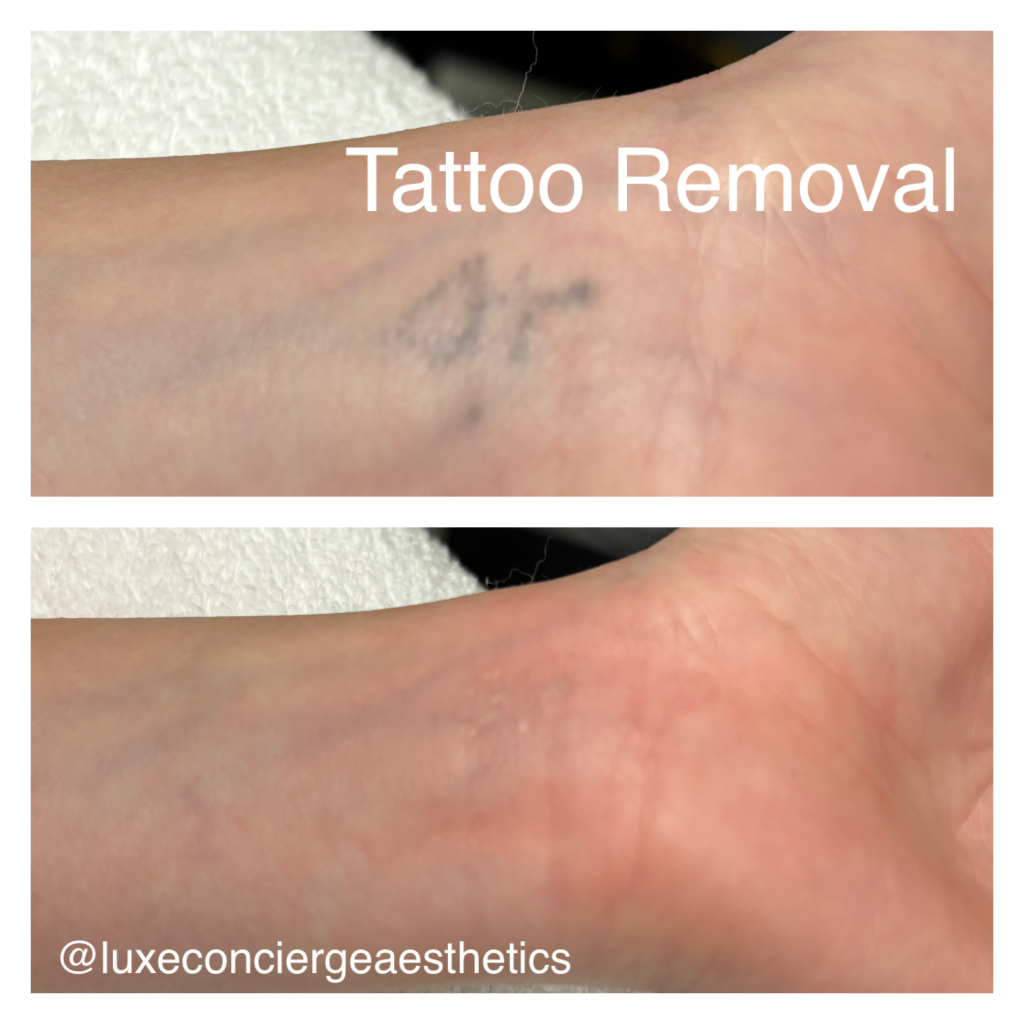Q-Switch-yag-tatoo-removal

q-switch-yag-tatoo-removal
Erase the Past, Embrce the Future.
- Safe for all skin types
- Q-Switch “Gold Standard” in tattoo removal
Spectrum Q-switched 1064nm/532nm Laser For Tattoo Removal
What is Tattoo and Pigment Removal?
Tattoo and pigment removal involve the use of Q-switched laser treatment, where the “Q” stands for quality. This treatment method employs high-power laser beams with precision, minimizing thermal interaction with surrounding tissues and specifically targeting tattoo ink pigments. The Q-switched laser, known as the gold standard for tattoo removal, emits extremely short pulses of high-energy light that are absorbed by tattoo pigment particles without affecting the surrounding skin. This process heats up the pigment, causing it to break down into smaller particles. Additionally, the Q-switched laser can be utilized to treat pigmented lesions such as age spots, freckles, sunspots, and some birthmarks by targeting melanin in the skin’s superficial layer. When the pigmented lesion absorbs the light energy from the laser, it converts into heat.
What sets Q-Switched Tattoo Removal apart?
Q-Switched laser technology stands out as the sole method capable of penetrating the dermis and effectively shattering tattoo ink using photoacoustic waves, all while preserving the integrity of surrounding skin tissue. Other methods either fail to reach and eliminate the ink or inflict excessive damage to the skin, leading to scarring. With wavelengths of 1064nm and 532nm, Q-Switched lasers address over 80% of tattoo colors.
What are some indications for Q-Switched Laser Treatment?
Q-Switched laser treatment is suitable for addressing various concerns, including tattoos, pigmented lesions such as age spots, freckles, sunspots, and certain types of birthmarks.
What colors of tattoos can be treated effectively?
Tattoos in colors like black, blue, dark blue, dark green, brown, red, purple, and orange respond well to treatment. However, colors like tan, yellow, bright green, and sky blue may pose more challenges.
What can I expect during and after the treatment?
During the laser tattoo removal process, some discomfort is normal, but it typically subsides with time. The treated areas may feel tender and sensitive due to swelling and blistering. You may notice frosting immediately after treatment, caused by the rapid heating of skin pigment, signaling the initial stage of healing. Swelling, redness, and tenderness usually diminish within a day or two, while blisters may form within 24 hours but are part of the healing process. It’s essential to avoid picking at blisters as they will heal naturally. The crust formed will eventually fall off within 10-14 days. Patients can generally resume their usual activities shortly after treatment, but the treated area should be kept dry and bandaged for a few days.
What does laser tattoo removal feel like?
While laser tattoo removal can be uncomfortable, many patients find it less painful than expected. It’s often compared to the sensation of a rubber band snapping against the skin or hot grease splattering. Despite the discomfort, it is generally bearable, and most patients find it less painful than getting a tattoo.
Pre-Treatment Guidelines?
To prepare for your treatment, it’s essential to avoid sun exposure and tanning beds for at least two weeks before and after the session. Refrain from taking pain medications such as Aleve or Aspirin for 3-7 days prior. You may use topical numbing cream or local anesthetic and apply cold compresses before the treatment for added comfort.
Post-Treatment Care.?
After the treatment, it’s crucial to keep the treated area out of the sun and refrain from swimming in pools, lakes, or baths until fully healed. Apply a recovery balm and keep the area covered for 5-6 days during the healing process. Applying ice for 10 minutes post-treatment can help alleviate any discomfort. Additionally, remember to:
– Use sunscreen to protect the treated skin, which becomes particularly sensitive to sunlight following the treatment.
– Avoid applying makeup or any potentially irritating products on the treated skin while it heals.
– Refrain from shaving treated areas until the skin is fully healed.
– Avoid soaking in baths, hot tubs, or pools until the skin has completely healed.
Treatment Duration?
The duration of each treatment session varies depending on the size of the treated area(s). After numbing, treatments can range from several minutes to an hour. The number of sessions required for tattoo removal depends on several factors, including the age, color, density of the ink, and location of the tattoo.
Results and Number of Treatments?
Results typically become noticeable after a series of sessions spaced six to eight weeks apart, allowing the skin to process the treatment. Most people start to see their ink fade slightly after each subsequent session, with more significant improvement after three appointments. Generally, it takes a few months for results to become evident. The recommended number of treatments typically ranges from 6-10 sessions.
Can I Exercise After Treatment?
Yes, you can continue exercising after treatment.

